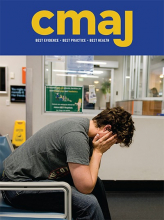Hematopoietic stem cell transplantation offers the chance of cure for myelodysplastic syndrome, myeloproliferative neoplasms and most adult acute leukemia and relapsed lymphoma
At 3 years after hematopoietic stem cell transplant (SCT), the probability of survival is 30%–60%, with disease recurrence accounting for 50%–60% of deaths.1 Cardiovascular disease (CVD), secondary malignancy and infections are leading causes of death unrelated to the primary disease.1
Optimal care after transplant involves a collaboration among the SCT centre, the primary care provider and the patient
For the first 3–6 months post-SCT, care is typically provided by the SCT centre. Thereafter, the SCT centre screens for and manages complications and patient outcomes specific to SCT. The primary care provider has a critical role in primary prevention of vaccine-preventable diseases, long-term surveillance and management of cardiometabolic risks, and screening for secondary malignancy in patients after SCT. Transplant recipients should be empowered to engage actively in their long-term health care and informed about specific health risks, and the importance of revaccination, malignancy surveillance and maintenance of a healthy lifestyle (Appendix 1, available at www.cmaj.ca/lookup/doi/10.1503/cmaj.200160/tab-related-content).
Compared with the general population, SCT recipients have 4 times the risk of CVD
Given the increased risk of CVD after SCT,2 screening for CVD risk factors should begin 6 months after the procedure. Hypertension, diabetes and dyslipidemia should be managed early and intensively, in line with clinical practice guidelines for patients at high risk of CVD. Recommended targets are available in Appendix 2, at www.cmaj.ca/lookup/doi:10.1503/cmaj.200160/tab-related-content.
As a result of prior therapy, SCT recipients have up to 5 times the risk of a secondary malignancy compared with the general population
Because of the substantially increased risk of secondary malignancy,3 SCT recipients require more intensive and individualized screening for malignancy, as detailed in Appendix 2.
Prior immunity is lost after transplant, and revaccination is necessary from 3 months after the procedure
Neutrophil recovery is normally completed within 4 weeks of transplant. Substantial lymphocyte reconstitution and associated cellular immunity has generally occurred by 3 months.4 Primary care providers are advised to follow the vaccination timing and dosage recommendations for SCT recipients in the Public Health Agency of Canada’s Canadian Immunization Guide.5
Footnotes
Competing interests: None declared.
This article has been peer reviewed.











